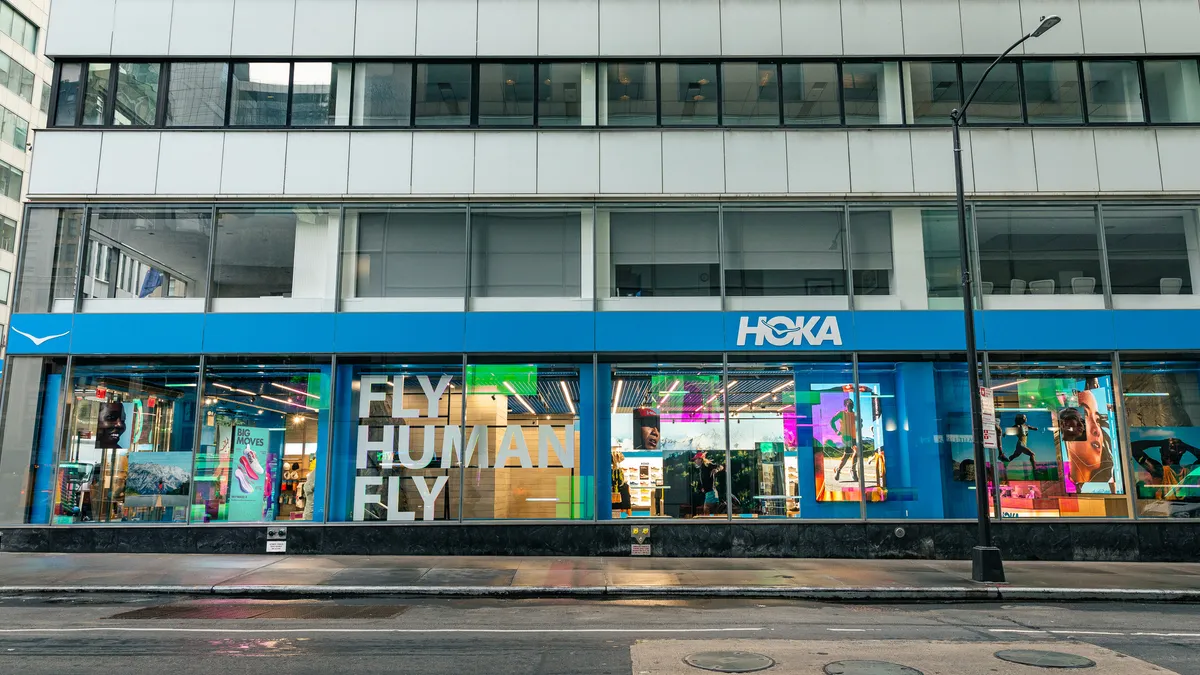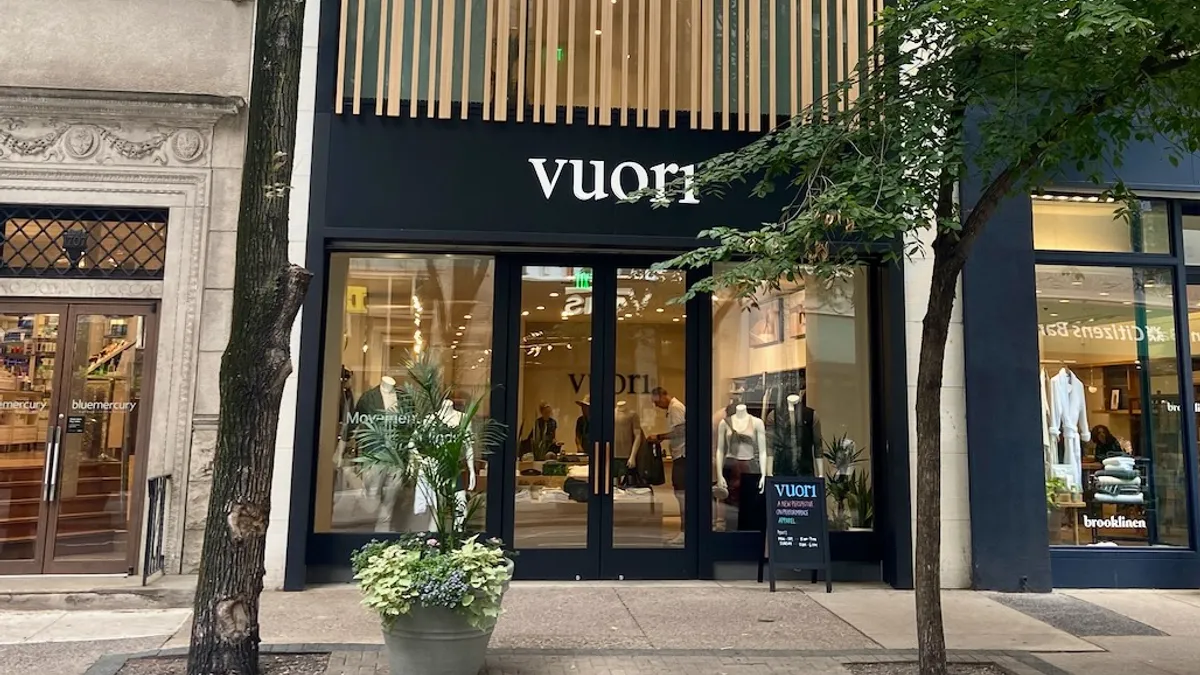In spite of pandemic-related disruptions the industry has faced this year, consumers are still expected to spend this holiday season. But by how much remains a question.
ICSC and CBRE both anticipate holiday sales growing less than 2% this year. Deloitte in September issued a "K-shaped" holiday prediction, in which sales tick up a modest 0% to 1% in one scenario and grow 2.5% to 3.5% year over year in another. And the National Retail Federation this week predicted growth of 3.6% to 5.2%, reaching between $755.3 billion and $766.7 billion.
What's easier to predict, however, is e-commerce taking more share this season as consumers opt to shop online.
But purchasing goods online carries a greater level of uncertainty for consumers than shopping in physical stores, which firms predict will result in an influx of unwanted goods.
Salesforce projects some $280 billion worth of returns this holiday season, which experts have said is largely due to consumers' inability to test out products, ask associates for help and browse products in the same way they can when shopping in-store.
Buying certain categories online, like apparel, may be more difficult than others because consumers cannot try on pieces prior to purchasing. Sixty-two percent of consumers in a Narvar study reported bracketing this year — buying multiple versions of the same item — which represents a 50% year-over-year increase.
Retailers have been proactive in mitigating the headaches associated with returns by investing more into their product detail pages, creating user-generated content like videos and enlisting third-party services to ease the process of collecting unwanted goods from consumers. Will that be enough?
The discussion forum on RetailWire asked its BrainTrust panel of retail experts the following questions:
-
Do you see retailers being able to effectively push customers to manage returns in person rather than via return shipping?
-
How might retailers mitigate other costs that come with an influx of holiday returns?
Here are seven of the most insightful comments from the discussion. Comments have been edited by Retail Dive for length and clarity.
Optimizing the returns process is key for profitability
David Naumann, CEO and President, Cogent Creative Consulting: The cost of returns is a big issue for retail and it goes beyond shipping costs. The labor to process returns and inspect products and the logistics of getting the product to the right place to sell the product while protecting margins is a huge challenge. Optimizing the returns process is critical to maintaining profitability of online transactions. Encouraging customers to return products in the store helps and some retailers may offer incentives such as a one-day discount on incremental purchases in the store.
Take a BOPIS-style approach to returns
Dave Bruno, Director of Retail Market Insights, Aptos: Just as we saw many retailers quickly pivot to offer curbside pickup, I think we need to see the same effort put into offering curbside returns. Offering the option to return online and drop off in-store (RODIS?) at curbside would make the curbside transaction efficient and offer socially distanced shoppers a safe option to return the merchandise and get their money more quickly than they would via return shipping.
Sizing is the real problem
Cathy Hotka, Principal, Cathy Hotka & Associates: I've been saying for many years that unpredictable sizing is a major problem here, and it has never been addressed. What, exactly, is a women's size "small"? A "small" at a teen retailer will bear no similarity to a "small" at Talbots. Until customers can be confident in what they're purchasing, we'll have margin-sapping problems with returns.
Prioritize 'bestsellers,' and move away from items with higher return frequencies
Lisa Goller, Content Marketing Strategist: This year's e-commerce surge means more products will boomerang back in January.
A buy online return in store (BORIS) policy saves retailers shipping costs but it's a hassle for consumers. Also, pandemic health concerns may make consumers reluctant to visit malls to return merchandise.
Since returns are inevitable, retailers can let consumers start the returns process on their website or app to minimize the amount of time they spend in-store. Offering fast, easy returns at a post office, FedEx or UPS store can also protect customer satisfaction.
To reduce returns, retailers can prioritize their assortment's bestsellers and drop items that tend to come back. Managing consumer expectations with detailed product data like dimensions can help consumers know exactly what they're buying.
Apparel remains one of the 'riskiest' categories to sell online
Ralph Jacobson, Global Retail & CPG Sales Strategist, IBM: This is not a one-size-fits-all challenge. When looking at reasons for returns, apparel is one of the riskiest for retailers as ordering/sizing is a major source of returns. Those retailers need to look at their commerce sites and minimize the need for customer returns as much as possible by looking at the shopper journey and eliminating weak points in the experience. Other product categories can be analyzed in similar fashion by improving steps in the shopping process to minimize opportunity for order errors.
'In too many cases, returns are encouraged'
Jeff Sward, Founding Partner, Merchandising Metrics: Managing returns is best handled as part of the original sale. In too many cases, returns are encouraged, so there isn't much room for retailers to now complain about a very clear, known cause and effect. Free shipping and free returns are very expensive competitive tools, customer acquisition cost or market share grab — whatever term you want to use. And trying to encourage in-store or in-mall returns during the dead of winter during a pandemic might be a very tall order. Smart selling might be a more profitable path than encouraging open-ended returns. Victoria's Secret recently rethought some product and pricing strategies and they seem to have worked remarkably well. Returns are a problem, but they are also a symptom of an even larger problem.
Incentivize the consumer to return in-store
Raj Shroff, Founder & Principal, PINE Strategy & Design: In order to push shoppers to doing returns in person there has to be something in it for the shopper otherwise they'll choose the most convenient option. And if that happens to be shipping, that's what they'll do. The pop-up and other aggregated returns are great ideas to attempt to curtail an onslaught.
I would think retailers could incentivize shoppers to return at store, hoping shoppers will end up buying other things while there – foot traffic is valuable. Perhaps others will get more creative and try to stage returns over set periods of days or weeks through incentives to manage traffic flow. E.g. Return your item this Thursday for [promotion on toys], Friday for [promotion on electronics]. Get creative, find the opportunity to try something and see what works.























